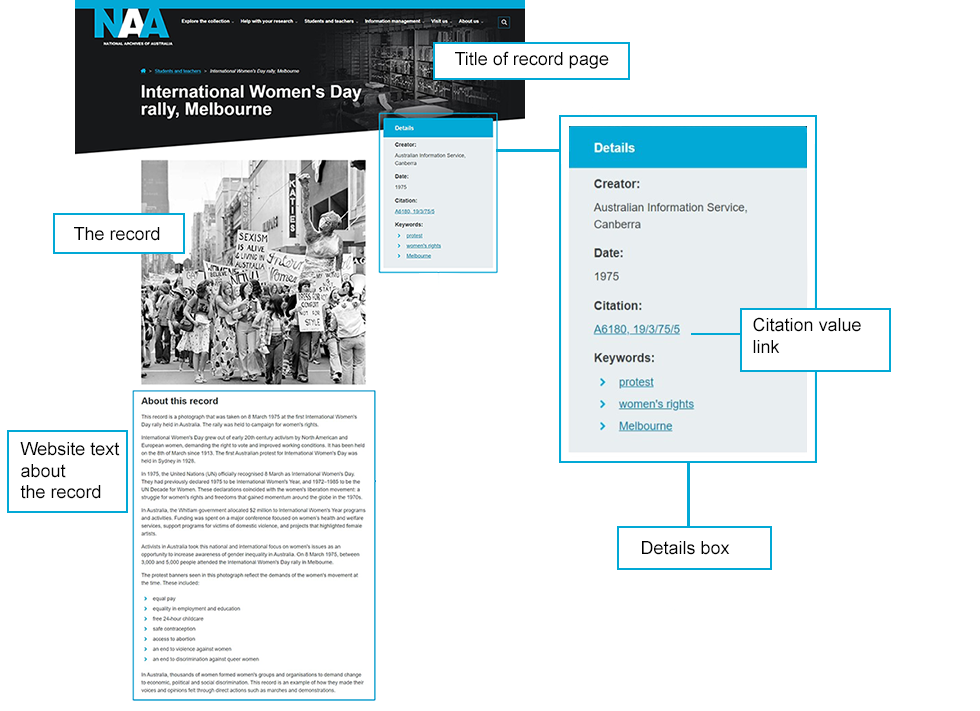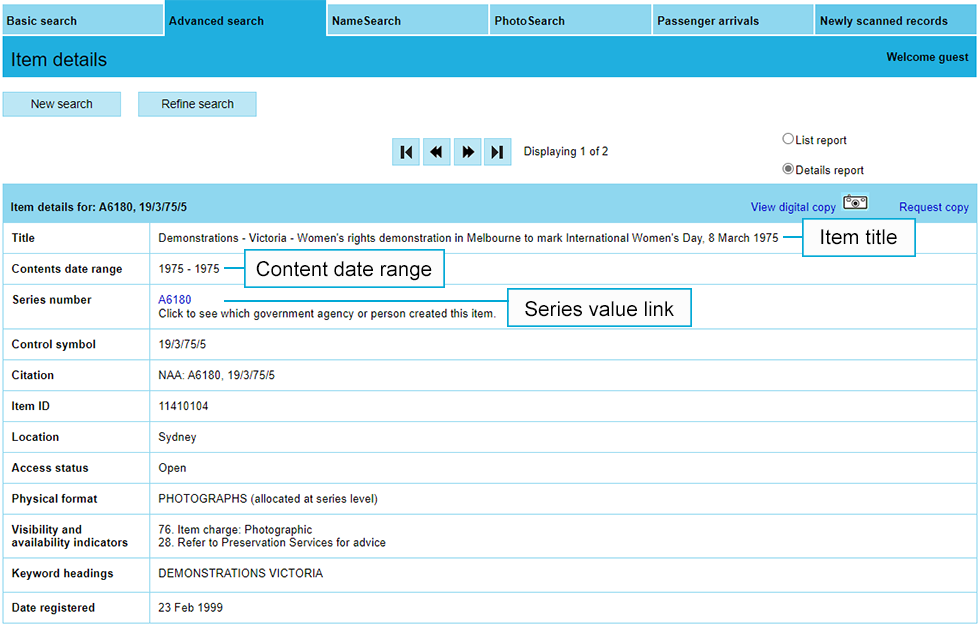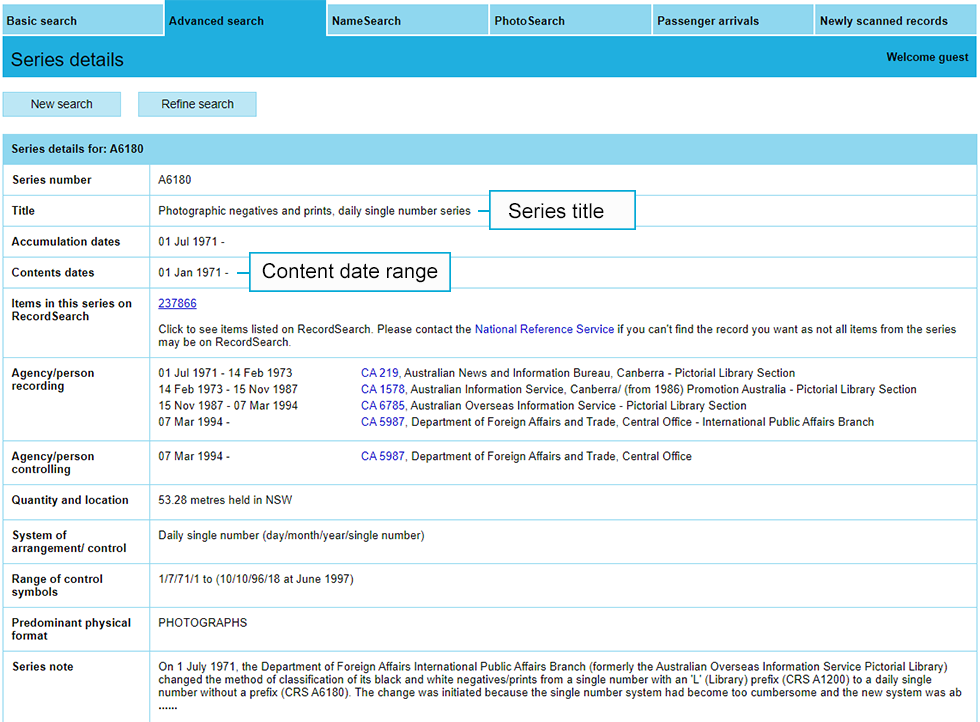The records on the student research portal are digitised copies of authentic archival records. This means that they are primary sources.
Primary sources like archival records provide you with valuable evidence from the time period that you are researching. They can be used to back-up and expand upon your historical claims and arguments. Learning to locate and analyse primary sources is an important skill for you to develop as a student researcher.
You should reference archival records as primary sources according to the guidelines found on this page.
How to reference archival records
An archival record is just one item in a series of items created or maintained by an agency or person. As far as possible, archives are kept in the same sequence and filing system in which they were created and maintained. A correct citation lets the reader know the origin as well as the location of a given record.
The citation for an archival record should, at a minimum, include:
- the name of the institution holding the record
- the series number of the record series to which the record belongs
- the control symbol (or item number); and
- a full stop to complete the citation.
An archival record may be referenced as an abbreviated citation or an expanded citation.
Abbreviated citations
When preparing footnotes or captions we recommend that you use the following abbreviated form of citation:
- The abbreviation 'NAA' (for National Archives of Australia) followed by a colon, for example 'NAA:'
- The series number, followed by a comma for example 'A6180,'
- The control symbol (also referred to as the item number) for example '19/3/75/5'
- A full stop.
The complete abbreviated citation would be: NAA: A6180, 19/3/75/5.
Finding the details for an abbreviated citation
All of the records available in our student research portal are held by National Archives. This means that the name of the institution holding the record will always be abbreviated to NAA.
All other information needed for an abbreviated citation can be found in the details box on the student research portal page for the record. This includes the series number and the control symbol, which are listed under the citation heading as a citation value link.
If the citation value link does not include a control symbol – and instead reads NN (no number) – then the title of the record page in the student research portal may be used instead of the control symbol.




